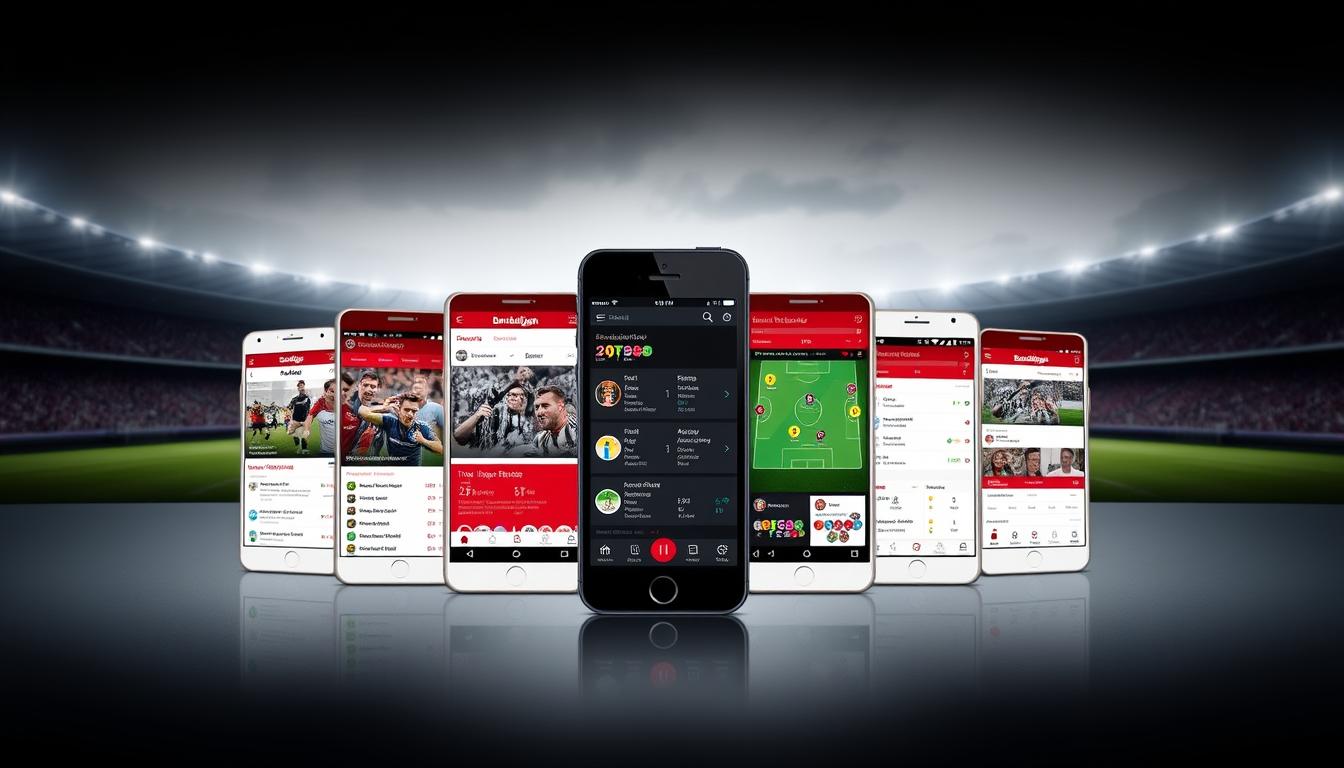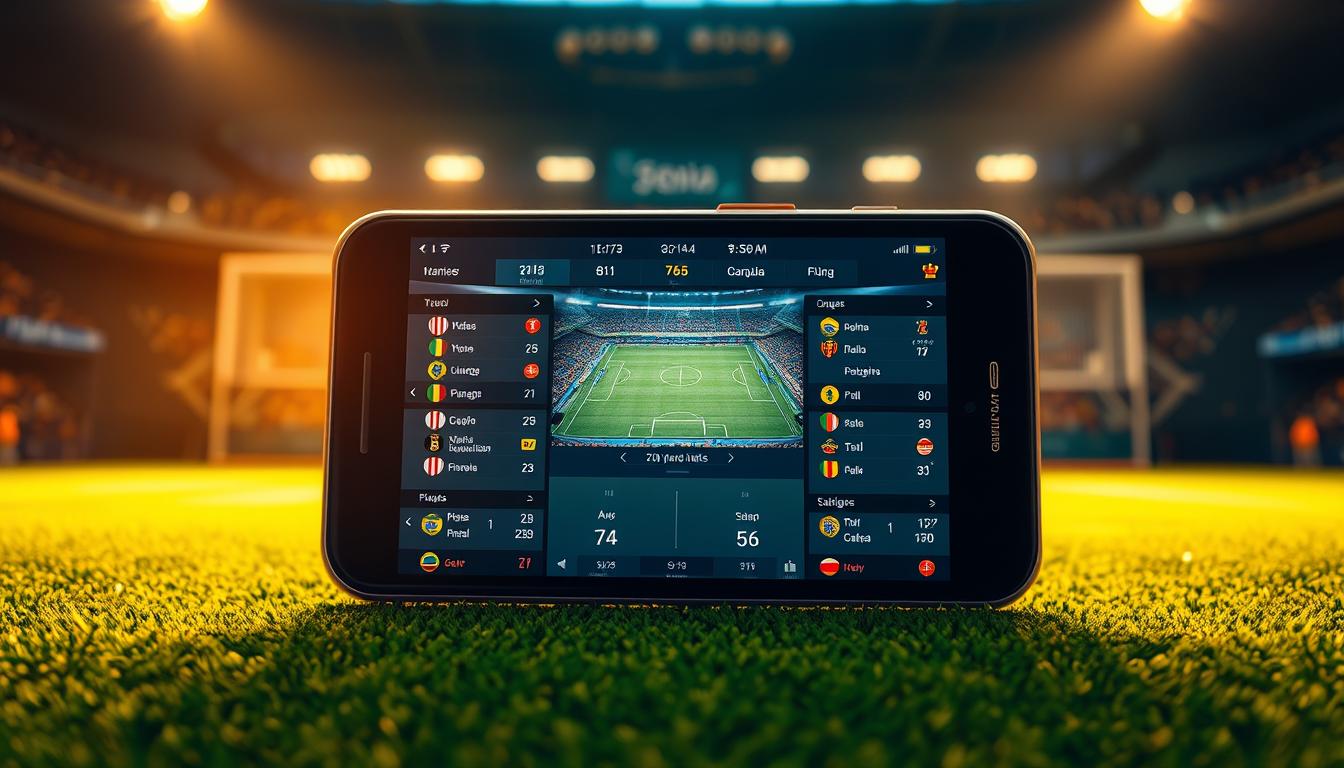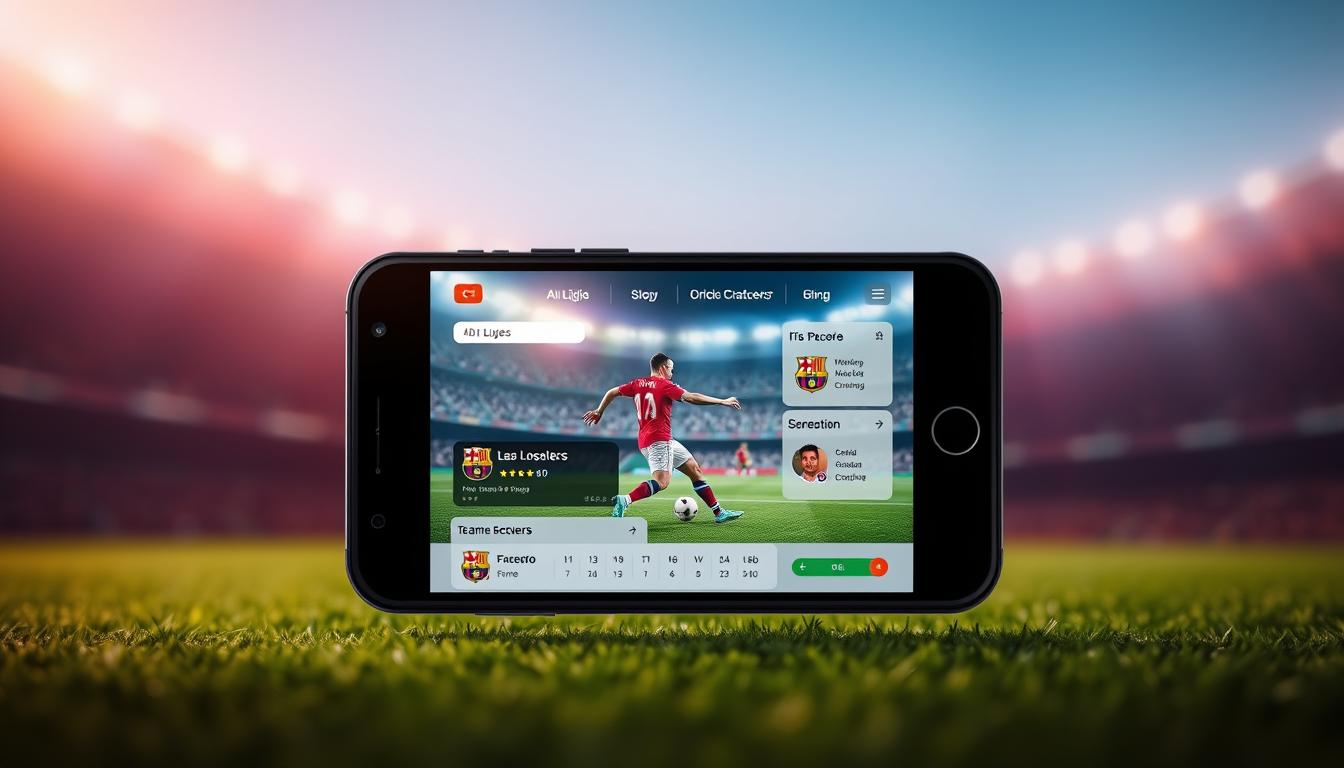Anúncios
Ever thought about playing old games without spending a lot on new hardware? Emulators are a great way to do this, especially for those with older devices. We’ll look at the top emulators that use less GPU power. This lets you play classic games without needing a strong graphics card.
As more people look for lightweight emulators, it’s key to know how to pick the best ones. This way, you can enjoy games on lower-end devices without using too many resources.
Introduction to Emulators
Emulators are key in the gaming world. They let users play games on different platforms. So, what are emulators? They are software that mimics the hardware and software of a gaming console. This way, users can play games made for that console.
Anúncios
As gaming changes, so does the need for emulators. They let players go back to old favorites or try new games.
There are many types of emulators today. Some focus on one console, offering precise gameplay. Others can run games from many consoles, giving a more varied gaming experience. Each type has its own strengths and weaknesses, so it’s crucial to find the right one.
Looking into how emulators developed helps us see their impact on gaming. At first, they were just for saving gaming history. Now, they’re advanced software that rivals the original consoles. Emulators are still important for gamers and developers today.
Anúncios
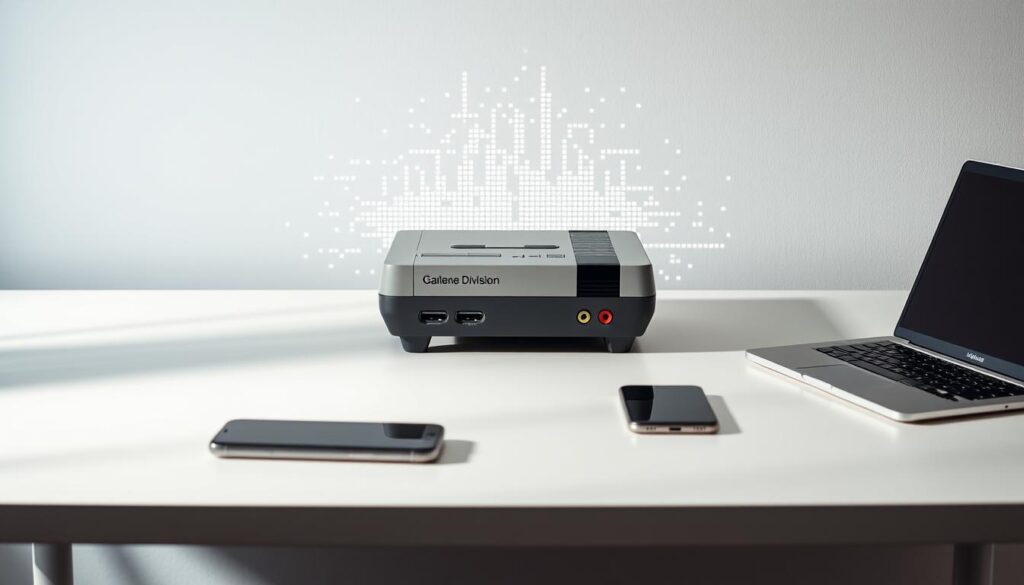
Understanding GPU Usage in Gaming
The Graphics Processing Unit (GPU) is key to better gaming. It makes images, animations, and video for computers. This affects how games look and work. Good GPU use means smoother visuals and a better gaming experience.
Knowing how GPUs work is important, especially for low-end devices. They handle complex math and graphics. This makes them great for high-quality video. Emulators use GPU functions to show console graphics on PCs.
Terms like frame rate, resolution, and rendering are important. Frame rate shows how smooth games are. Resolution affects image clarity. Good rendering techniques improve both graphics and performance.
Choosing the right emulator is crucial for those with limited graphics. The right software can make games run better on lower-end systems. Knowing about GPU capabilities helps pick emulators that work well.
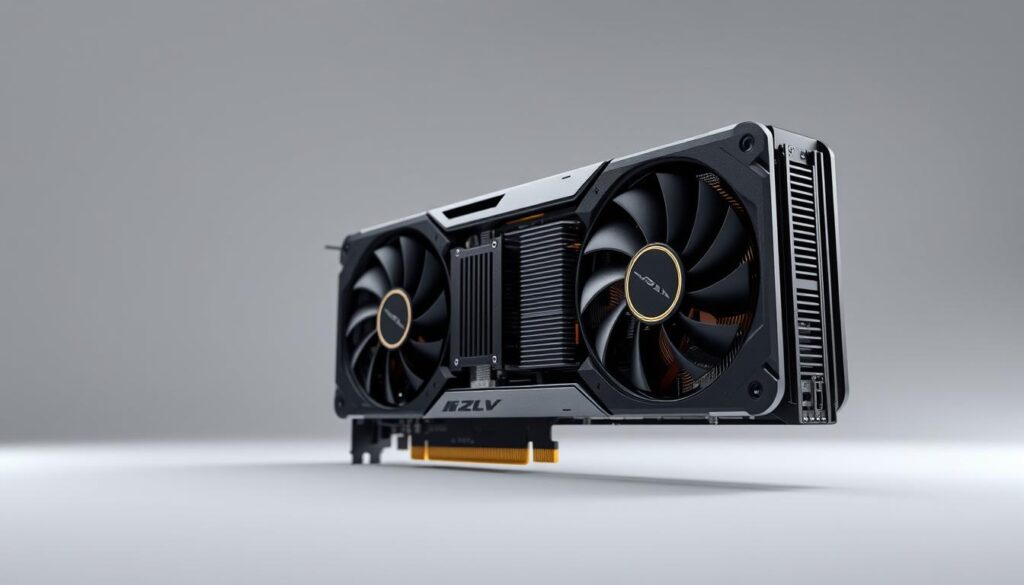
Importance of Choosing Lightweight Emulators
Choosing lightweight emulators is key for those with older or low-end hardware. These emulators offer big benefits in emulation performance. They use less power, which means less strain on the GPU.
This leads to smoother device performance. As a result, gaming becomes more enjoyable.
Lightweight emulators also mean less heat. This is crucial for laptops or portable devices. Too much heat can damage the hardware.
With these emulators, you can play games for longer without worrying about the battery. This makes gaming sessions longer and more enjoyable. Choosing lightweight emulators means you can have a great gaming experience without needing expensive hardware.
Emulators with Lowest GPU Usage for Gaming
Gamers looking for emulators with low GPU usage have many options. These emulators are designed to work well with less powerful hardware. They help keep gaming smooth and efficient.
RetroArch is a top choice for its flexibility and light design. It lets users pick cores that use less GPU power. This makes it great for low-end systems.
VisualBoy Advance is perfect for classic Game Boy fans. It’s simple and uses few resources, yet it still offers great quality.
Mednafen is a multi-system emulator that uses less GPU power. It works well with many consoles and games. Project 64 is another good choice for Nintendo 64 games. It’s easy on resources, so you don’t need expensive hardware.
Dolphin Emulator: A Deep Dive
The Dolphin Emulator is a top choice for gamers wanting to play GameCube and Wii games. Knowing the system requirements is key for a great gaming experience. It works well with mid-range processors, so you don’t need the most powerful one.
System Requirements for Dolphin
The Dolphin Emulator needs certain hardware to run smoothly. Here’s what you need:
| Component | Minimum Requirement | Recommended Requirement |
|---|---|---|
| CPU | Dual-core 2.0 GHz | Quad-core 3.0 GHz or higher |
| RAM | 4 GB | 8 GB or more |
| GPU | Direct3D 11 compatible | Direct3D 12 compatible (NVIDIA or AMD) |
| Operating System | Windows 7 or later | Windows 10 or later |
Configuration Tips for Best Performance
Setting up Dolphin right can make your games run better. Here are some tips:
- Enable Dual Core: This lets the emulator use more CPU cores.
- Select the Right Video Backend: Choose between Direct3D and OpenGL based on your GPU for the best performance.
- Adjust Internal Resolution: Lowering the internal resolution can make games run faster on less powerful devices.
- Utilize Game-Specific Settings: Many games have settings you can tweak for better performance.
By meeting the Dolphin system requirements and setting it up correctly, you can get the most out of your games.
PCSX2: Emulating PlayStation 2 Games
PCSX2 is a top-notch PlayStation 2 emulator. It lets users play classic PS2 games on modern PCs. It’s designed to work well on various hardware, offering great performance even on older systems. Knowing the right system specs helps players get the best out of PCSX2, ensuring smooth gameplay.
Minimal System Specs for PCSX2
Even older CPUs can run PCSX2 well. A dual-core processor and a GeForce 6600 or similar GPU are enough. However, newer hardware boosts the experience even more.
| Component | Minimum Requirement | Recommended Requirement |
|---|---|---|
| CPU | Dual-core 2.0 GHz | Quad-core 3.0 GHz |
| GPU | GeForce 6600 or equivalent | GeForce GTX 750 or equivalent |
| RAM | 2 GB | 4 GB or more |
Optimizing Graphics Settings for Low-End Devices
For low-end devices, optimizing graphics is key. Tweaking settings like texture cache and using speed hacks can help. These tweaks keep gameplay smooth and fun, without losing visual quality.
VisualBoy Advance: Retro Game Revival
VisualBoy Advance is a favorite for those who want to relive their childhood gaming days. It lets users play classic GBA games and titles from the original Game Boy and Game Boy Color. Its lightweight design makes it perfect for low-end devices that struggle with heavy software.
Setting up VisualBoy Advance is easy, making it great for both new and experienced users. After downloading, you only need to make a few tweaks to start playing your favorite GBA games. Its simple interface and low CPU usage ensure smooth gameplay without using up too many system resources.
In short, VisualBoy Advance is a great choice for anyone wanting to explore handheld gaming. It efficiently emulates GBA games on modest hardware, showing its thoughtful design.
Snex9x: Mastering SNES Games
The Snex9x emulator is perfect for those who want to play classic SNES games without needing expensive hardware. It’s lightweight and offers great performance. This makes it a favorite among retro game fans who value simplicity and efficiency.
Snex9x is great because it runs SNES games well on devices with less power. It uses smart technology to boost speed and make games feel smooth. Plus, its easy-to-use interface lets everyone enjoy their favorite games without hassle.
Why Choose Snex9x for Performance?
Snex9x has several features that make it stand out:
- Low Resource Consumption: Made for SNES games, Snex9x uses very little system resources. This means it works well even on old devices.
- High Compatibility: It supports a lot of SNES games. This makes it a go-to choice for fans of the classic console.
- Configurable Graphics Options: You can adjust settings to get the best visuals or speed. This lets you customize your experience based on your hardware.
Choosing Snex9x lets gamers relive their favorite SNES moments. They get to enjoy their games efficiently without stressing their systems.
Project 64: N64 Games Made Easy
Project 64 is a top Nintendo 64 emulator known for its ease of use. It’s easy to download and install, making setup a breeze. It works well even on lower-end devices, thanks to its balance of performance and GPU usage.
It’s perfect for newcomers to emulation. Project 64 has a simple interface that’s easy to navigate. You can adjust graphics settings, input, and plugins with just a few clicks. This makes it easy for both new and experienced gamers to enjoy N64 games.
Project 64 is also known for its consistent performance. It gets regular updates and has a strong community. This means users can count on a reliable experience when playing classic Nintendo 64 games.
RetroArch: All-in-One Emulator
RetroArch is an all-in-one emulator that works with many gaming systems. It’s also very lightweight, making it great for older devices. Users can tweak settings to get the best gaming experience possible.
Using RetroArch for Light Emulation
Using RetroArch can make gaming more efficient and less taxing on devices. It supports many cores, each for different consoles. This lets players pick the best core for their game, improving performance and making games run smoother.
Setting Up RetroArch on Low-End Devices
To set up RetroArch on older machines, start with the latest version. Then, choose the cores you need. Lower graphics settings to improve performance, like reducing resolution and disabling extra features. This setup helps older devices run games well.
Mednafen: Multi-System Emulator
Mednafen is a top choice for gamers who want to play classic games on older hardware. It works well even with low GPU requirements. This means you can play many games without needing expensive parts.
It supports a wide range of consoles, letting you play your favorite games again. Mednafen also has features like save states and control options. These make playing games on less powerful machines smooth and enjoyable.
Setting up Mednafen is easy and offers many customization options. This lets users tailor their experience to their hardware. With its wide game library, Mednafen is a go-to for retro gaming fans.
Yuzu: Switch Emulation for Midrange PCs
The Yuzu emulator lets users play Nintendo Switch games on midrange PCs. It’s a favorite because it can run many Switch games, even with lower hardware. It’s great for those who want to play their favorite games without needing expensive computers.
As more people want easy gaming options, knowing which games work well on Yuzu is key. Below is a table showing some low GPU titles that run well without hurting performance.
| Game Title | GPU Usage | Performance Notes |
|---|---|---|
| Stardew Valley | Low | Runs smoothly even on midrange hardware |
| Celeste | Very Low | Excellent frame rates, minimal settings required |
| Undertale | Low | Perfect performance with basic graphics settings |
| Hollow Knight | Medium | Playable on most midrange setups with reduced graphics |
| Thimbleweed Park | Very Low | Runs flawlessly on low GPU devices |
Best Practices for Running Emulators on Low-End Hardware
Running emulators on low-end hardware can be tough. But, the right strategies can boost performance. It’s key to optimize both software and hardware for a better gaming experience. Tweaking graphics settings can greatly improve performance without big upgrades.
For even better results, consider upgrading your hardware. This can significantly improve overall performance.
Tweaking Graphics Settings
Adjusting graphics settings is vital for better performance on low-end systems. Lowering the resolution and texture quality can greatly increase frame rates. Here are some performance tips for graphics settings:
- Lower the resolution to decrease graphics load.
- Disable unnecessary visual effects such as shadows and anti-aliasing.
- Use performance-focused presets available in the emulator settings.
- Experiment with different rendering backends to find the most efficient option.
Upgrading Other Components for Better Performance
Upgrading your system can also improve emulator performance. While upgrading main components can be tough, targeted improvements can be very beneficial. Here are some suggestions:
- Increase RAM for better multitasking and smoother performance.
- Invest in a more powerful CPU for efficient emulations.
- Use SSD storage for faster data access and reduced loading times.
Choosing the Right Hardware for Emulation
Choosing the right hardware for emulation can really improve your experience, especially if you’re watching your budget. A smart approach to building an emulator PC means you can enjoy light gaming without spending too much. You’ll need a CPU and GPU that work well together and are affordable.
When looking at emulation-friendly setups, focus on powerful yet affordable parts. A mid-range processor works well for most emulators. For graphics, cards like the NVIDIA GTX 1650 or AMD Radeon RX 550 are great because they’re powerful but not expensive.
Don’t forget about memory. You’ll want at least 8GB of RAM for smooth multitasking and stable performance. Also, using a solid-state drive (SSD) instead of a hard drive can make your system much faster.
Building an emulator PC can be a fun project. By carefully choosing your CPU, GPU, and RAM, you can get the best performance for your gaming needs. Finding the right balance means you can enjoy great emulation without spending too much.
Common Emulation Issues on Low-End Devices
Emulation problems often happen on low-end devices. These issues can cause lag, graphical glitches, and crashes. Knowing these problems helps improve gaming on emulators that need less GPU power.
Lag is a big problem, making games hard to play. Devices may struggle to run games smoothly. Choosing emulators made for low-end devices helps. Adjusting settings can also make games run better.
Graphical glitches can cause game distortions or missing textures. This is due to hardware not being able to handle graphics well. To fix this, try changing the emulator’s graphic settings. This might help make the game look better and run smoother.
Crashes are another big issue, causing frustration. They can happen if the device runs out of memory or gets too busy. To avoid this, close unnecessary apps before playing games. This helps keep the device running smoothly.
Understanding and fixing these problems can make emulators on low-end devices better. By taking steps ahead of time, you can enjoy games without many problems.
Playability: The Trade-off Between Quality and Performance
Playing older games on less powerful hardware means making emulation trade-offs. These choices affect how good the game looks and how well it runs. If you want better graphics, the game might run slower. But if you want it to run smoothly, the graphics might not be as sharp.
Finding the right balance between quality vs performance is key to a great gaming experience. By adjusting settings, you can find a sweet spot. For example, lowering the game’s resolution can make it run faster, which is great for fast-paced games.
Many emulators let you easily change these settings. You can try different visual options to see what works best for you without stressing your computer. Finding the right balance can make your gaming experience enjoyable, even on less powerful machines.
Everyone has their own preferences when it comes to gaming. Some like amazing graphics, while others prefer smooth gameplay. Knowing what you value most helps you make choices that make your gaming experience better.
User Experiences with Different Emulators
User experiences offer a peek into the world of emulation. Many gamers share their thoughts on various lightweight emulators. They talk about how these tools work on low-end hardware, helping others understand before they start.
Community feedback is key in shaping opinions on emulators. Users share their personal stories with titles like Dolphin, PCSX2, and RetroArch. Some praise the optimized settings for better gameplay on limited devices. Others mention compatibility issues.
In forums, gamers share their experiences with different emulators. They offer tips on improving performance and tweaking settings. Real user insights make emulator reviews valuable for those new to emulation.
Benefits of Using Lightweight Emulators
Lightweight emulators offer many benefits that make gaming better, especially for those with older devices. They save resources like processing power and memory. This lets gamers play games efficiently without stressing their devices.
They also help save battery life on portable devices. Since they use less power, devices last longer during gaming. This means gamers can play for hours without needing to recharge.
Casual gamers find these emulators work well for many games. They’re great for playing old favorites or trying out new indie games. For those with less powerful devices, using low-power mode can make games run even better. Online guides can help with this.
In short, lightweight emulators save resources, extend battery life, and offer good performance. They’re a great choice for many gamers today.
Conclusion
Choosing the right emulators is key for fun gaming, especially on low-end hardware. We talked about how low GPU usage is important. This lets users play both old and new games without needing powerful systems.
Emulators like Dolphin, PCSX2, and RetroArch are great. They offer top-notch gaming on less powerful devices. This makes gaming possible on machines that might not handle it otherwise.
Knowing about lightweight emulators is vital for gamers with less powerful machines. This article highlights how versatile and supported these tools are. The right emulator can make any low-end hardware great for gaming. It shows that you don’t need the latest tech to enjoy games.
FAQ
What is an emulator?
An emulator is software that makes a gaming console’s environment on other devices. It lets users play games from that system on different devices.
Why is GPU usage significant in emulation?
GPU usage is key because it affects how well games run. Knowing about GPU performance helps pick emulators that work well on your device.
Are lightweight emulators suitable for older devices?
Yes, lightweight emulators are made for older or lower-end devices. They improve performance and battery life without needing top-notch specs.
How can I optimize settings for better performance on emulators?
To get better performance, adjust graphics settings and use speed hacks. Also, set up your system’s hardware as your emulator needs it.
What are the benefits of using lightweight emulators?
Lightweight emulators use less resources, save battery, and let you play classic games without expensive upgrades.
Can emulators run on midrange PCs?
Yes, many emulators, like Yuzu for Nintendo Switch games, work on midrange PCs. They might need a bit more power than lightweight options.
What are some common issues with running emulators on low-end devices?
Issues include lag, glitches, and crashes. But, these can often be fixed with the right setup and tweaks.
How can I choose the right emulator for my system?
Pick an emulator based on your hardware, gaming goals, and game preferences. Make sure it doesn’t use too much GPU power.
What is the best emulator for PlayStation 2 games?
PCSX2 is a top choice for PlayStation 2 games. It runs well on lower-end hardware with the right settings.
Is RetroArch worth using for emulation?
Yes, RetroArch is great for its versatility and support for many systems. It’s also lightweight, making it perfect for limited hardware.


